Senmaida (Thousand pieces of terraced rice fields) of Yotsuya
Yotsuya Shinshiro city, Aichi Pref.
Let me show you "Senmaida of Yotsuya" as an example of the original scenery of Japan.
The following images were offered by Mr. Takanori Hayashida.
To summarize the content of the Homepage of the city of Shinshiro simply,
"The terraced rice fields Tanada spreading on the southwestern slope of Kurakake-yama hill, are at the height from 220m to 430m above sea level. On the pocket of hills are the terraced rice fields surrounded by four villages. The scenery of the terraced rice fields of each season has been giving richness, ease and relief to Japanese people as an original scenery of Japan for a long time."
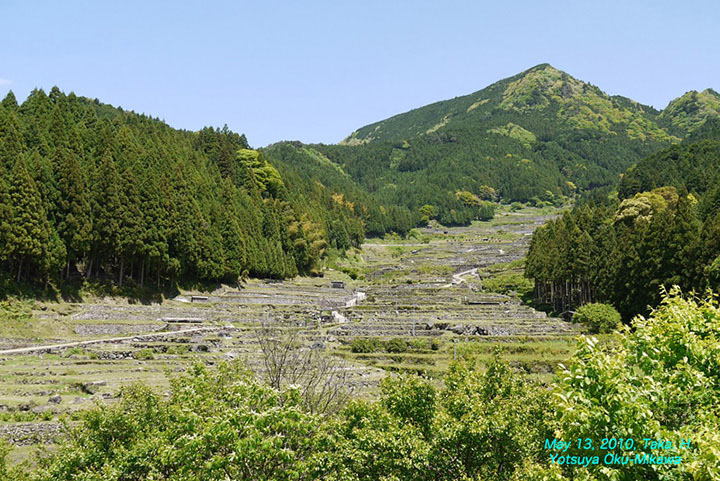
A view before rice planting on May 13, 2010, The stone walls by piling-stones are seen.
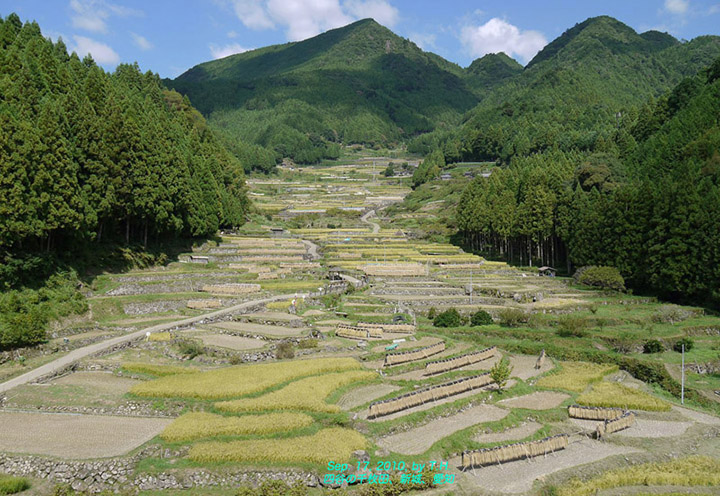
A view during the rice harvest on Sep. 17, 2010
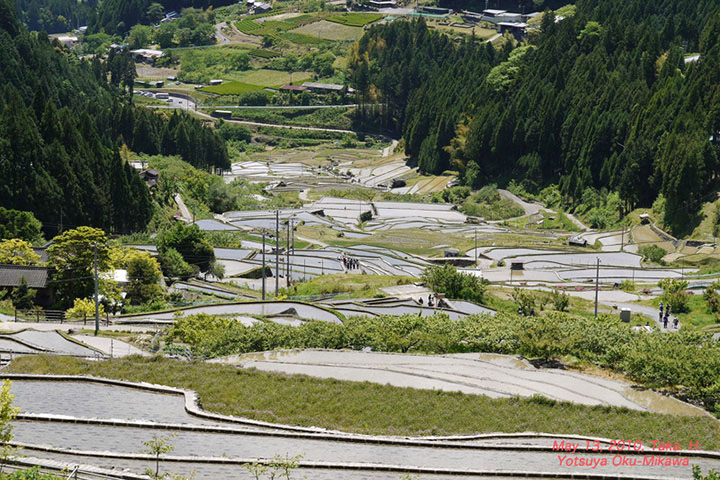
A overlooking view before rice planting on May 13, 2010
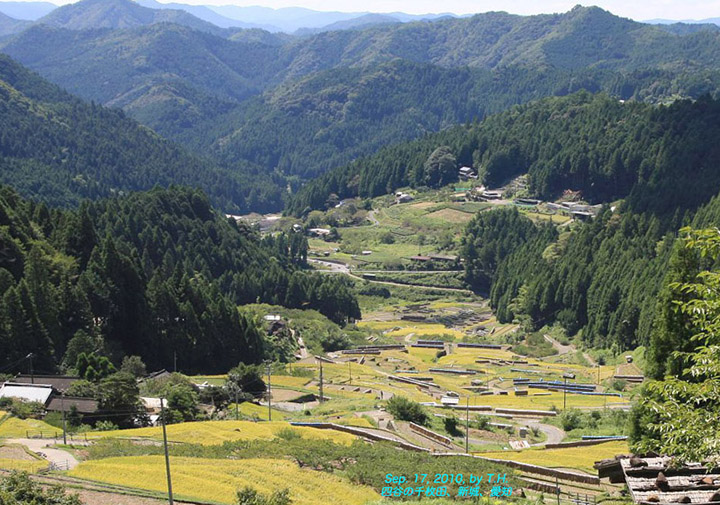
A overlooking view during the rice harvest on May 13, 2010

A view before the rice harvest on Sep. 06, 2010
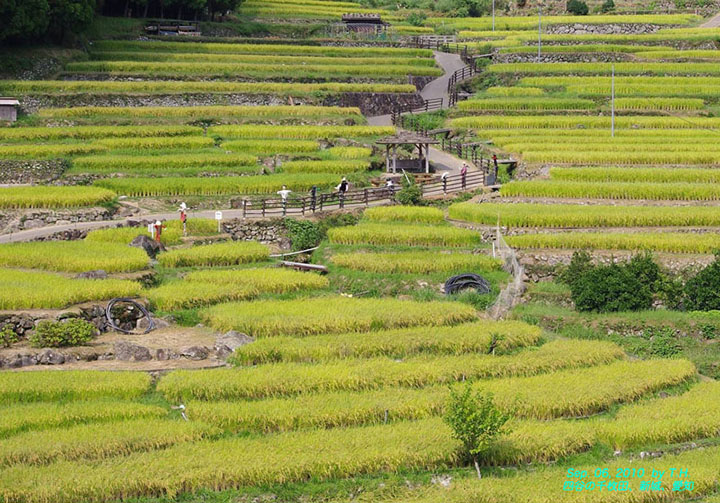
A view with scarecrows before the rice harvest on Sep. 06, 2010
My image on the original scenery of Japan
|
I think the terraced rice field "Tanada" is a scenery of rural nature "Satoyama",
and one of the original scenery of Japan with which many people can identify themselves.
I think the image of "Tanada" is used as a motif of Japanese Garden.
Both "Mizukagami (water mirror)" of the Suzaku Garden, and "Suikei dana(shelf)" of the Keihanna Commemorative Park,
remind me of the images of terraced rice fields "Tanada" and the romance of "the moon reflected in each rice fields".It seems to me that the former is flat plate-like, digital and urbane or sophisticated,
whereas the latter is three-dimensional, analogue and rural or pastoral.
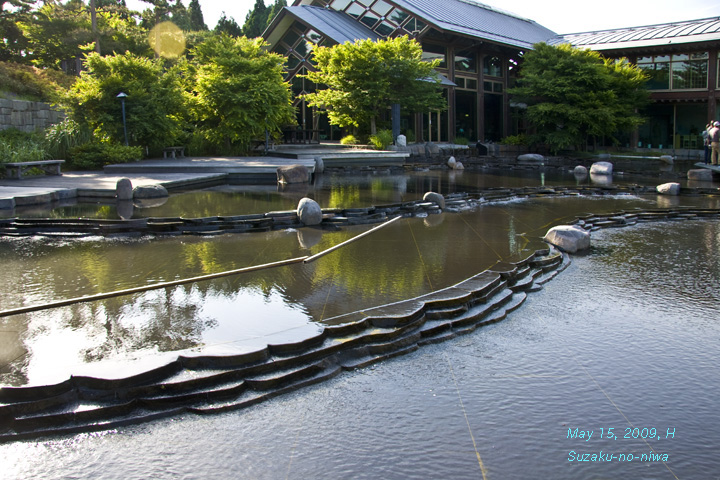
"Mizukagami (water mirror)" of the Suzaku Garden in Kyoto city
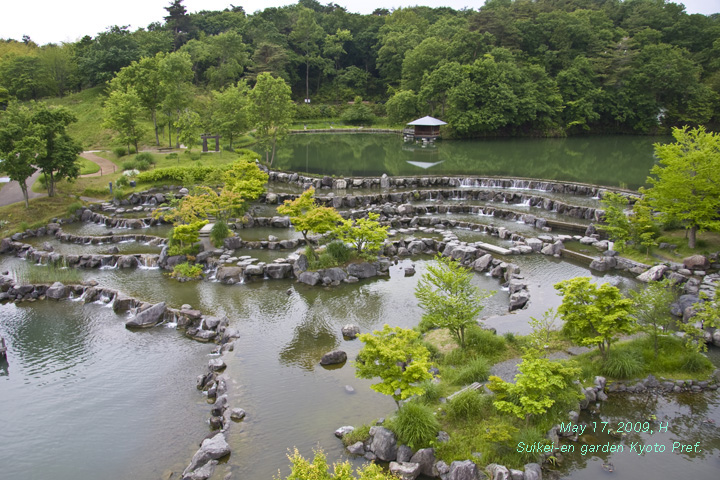
"Suikei dana(shelf)" of the Keihanna Commemorative Park in Seika-cho Kyoto Pref.
After water is poured into "Tanada", we can see a lot of water mirrors.
It is an elegant thing that we enjoy each moon reflected in each "Tanada" one by one
with someone while walking the footpath between the rice fields.